October 29, 2016: That's the last time Georgia lost a game to an SEC East foe. Kirby Smart's Bulldogs erupted in 2017, winning the conference and reaching the finals of the College Football Playoff. And with no one else ranking higher than 28th in S&P+ or 34th in FPI, it was easy to see the Dawgs owning the division for years to come.
That ownership indeed continued in 2018, but the neighborhood got its act together a bit. Florida was borderline top 10, and Missouri, Kentucky and South Carolina were borderline top 30, at worst. The East even went 9-5 against the West! Smart is recruiting at an absurd level, and it doesn't appear Georgia plans on being anything other than a top-five program anytime soon. But the landmines increased last year, and we're just one upset from a wacky race.
A quick reminder on terminology: S&P+ is the tempo- and opponent-adjusted efficiency measure I created at Football Outsiders in 2008.
Teams are listed below in order of S&P+ projections. Click here for the SEC West preview.
Jump to a team:
Georgia | Florida | Missouri | South Carolina
Tennessee | Kentucky | Vanderbilt
Georgia Bulldogs
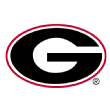
2018 record: 11-3 (No. 2 S&P+, No. 3 FPI)
2019 S&P+ projection: 10.1 wins (No. 2)
2019 FPI projection: 9.9 wins (No. 3)
To be a fan of any college football team not named Alabama, Clemson or maybe Ohio State right now is to live in a perpetual state of existential crisis. To be a fan of a school that considers both Alabama and Clemson rivals, to some degree, is even more fraught.
From a 20,000-foot view, the Georgia Bulldogs are living a pretty good life right now.
• After a first-year reset in succeeding Mark Richt, Kirby Smart has gone 24-5 in two seasons, with an SEC title, two top-10 poll finishes, and two top-two recruiting classes.
• The Dawgs came within an overtime period of the national title in 2017 and within about three or four minutes of a return trip to the College Football Playoff in 2018.
• They head into 2019 with multiple blue-chippers in every unit on the field, All-American candidates everywhere you look, a veteran quarterback (Jake Fromm) -- hell, they even have an amazing kicker (Rodrigo Blankenship).
Make no mistake, though: The existential crisis remains.
After all, Georgia didn't get the job done in 2017, falling victim to Alabama and second-and-26. And with a shot at revenge in the 2018 SEC championship game, they gave up 21 unanswered points and lost, 35-28. Then, for good measure, they came out flat against Texas in the Sugar Bowl and lost that, too.
The late-2018 hiccup created some parallels that serve as both encouragement and a reminder that Smart's journey isn't automatically going to end in a national title.
• First year: Richt 8-4, Smart 8-5
• Second year: Richt 13-1 with an SEC title and No. 3 poll finish, Smart 13-2 with an SEC title and No. 2 poll finish
• Third year: Richt 11-3 and No. 7 poll finish, Smart 11-3 and No. 7 poll finish
From 2001-15, Richt produced the most consistently solid results this side of wherever Saban and Urban Meyer were coaching. He won a second conference title in 2005, and after a brief downturn (14-12 in 2009-10), he made another charge to the brink of a national title in 2012. But he came up a few yards short of Saban's Tide in 2012 and never got another shot at a ring. He was both a massive success and a cautionary tale.
This is a pretty cruel sport. You never know how many chances you're going to get. Georgia has seen shots slip through its fingers for two straight years. Now, with Alabama and Clemson looking as loaded as ever and division rival Florida charging up from behind, UGA fans have to wonder if the moment is slipping away from them.
It probably isn't. Again, the Dawgs are loaded.
On offense, they return Fromm, running back D'Andre Swift, and most of last year's offensive line, including All-American left tackle Andrew Thomas. On defense, six of last year's seven primary linemen are back, as are eight of nine on the DB depth chart. Even with the loss of first-round cornerback Deandre Baker, the continuity here is immense.
The major turnover comes in two places: the receiving corps and the coaching booth.
Leading receivers Riley Ridley and Mecole Hardman have gone to the NFL, and Jeremiah Holloman was booted from the team this summer. Only one returning wideout caught more than three passes last year (Tyler Simmons, with all of nine receptions). Smart has to hope that some combination of recent transfers and young blue-chippers can quickly find a rapport with Fromm.
Meanwhile, Smart is taking after his former boss in another way: He's having to break in two new coordinators. Offensive coordinator Jim Chaney left for Tennessee, and defensive coordinator Mel Tucker is now Colorado's head coach. In both instances, Smart promoted from within, removing the "co-" from James Coley's "offensive co-coordinator" title and bumping fast-rising OLBs coach Dan Lanning to DC.
Both Chaney and Tucker did their jobs well but left room for growth. Georgia's red zone execution on offense was costly, and as Smart acknowledged this offseason, the defense was strong but not disruptive enough.
If requisite growth takes place, the sky's the limit. Per S&P+ projections, Georgia is a projected favorite in every game this fall, and only two games (vs. Florida, at Auburn) are projected to be within 14 points. Florida is on the rise, and in Missouri and South Carolina, the SEC East has two other projected top-20 teams as well, but it doesn't matter yet -- the Dawgs are still the kings of the East. And for a third straight year, they'll have a shot at ruling something greater than just their division.
Florida Gators
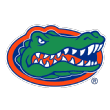
2018 record and rankings: 10-3 (No. 9 S&P+, No. 11 FPI)
2019 S&P+ projection: 8.7 wins (No. 6)
2019 FPI projection: 8.3 wins (No. 8)
The Florida football program has produced three Heisman-winning quarterbacks: Steve Spurrier in 1966, Danny Wuerffel in 1996, and Tim Tebow in 2007. The Gators have won three national titles (1996, 2006, 2008), averaging 40 points per game in those campaigns. With Spurrier as head coach, they revolutionized the college football passing offense in the 1990s, and with Urban Meyer taking over in the mid-2000s, they rode a muscular, terrifying variation of the spread to two national titles and four straight years of ranking 11th or better in Off. S&P+.
Plenty of strong defensive talent has rolled through Gainesville through the years, to be sure. But at its best moments, this has been a program defined by offense. Splashy, devastating offense.
That has made the 2010s a pretty jarring decade. The Gators fell from second to 57th in Off. S&P+ in 2010, Meyer's last year in charge, then averaged a No. 61 ranking under Will Muschamp and a No. 72 ranking under Jim McElwain. Their wins were ugly, and their losses were uglier.
From 2012-17, Florida scored more than 45 points just three times: against Eastern Michigan and Eastern Kentucky in 2014 and New Mexico State in 2015. But over the final four games of 2018, the Gators averaged 45 points per game.
• They gained 528 yards (6.4 per play) and scored 35 points in a shootout win over Muschamp's South Carolina.
• They cruised to 600 yards (7.0) and scored 63 against Idaho.
• They gained 536 yards (6.8) and scored 41 points on Florida State, their most in the rivalry since 2008.
• Against Don Brown's top-10 Michigan defense, they gained 427 yards (6.7) and scored 41 points in a Peach Bowl blowout.
Dan Mullen's first season replacing McElwain as UF coach was a bit of a roller coaster. In just his second game in charge, the Gators' 31-year winning streak over Kentucky ended with a 27-16 loss in Lexington. A couple of months later, they followed up a 36-17 rivalry loss to Georgia with a 38-17 blowout loss to Missouri at home. Not ideal.
It all came together in those last four games, though. Oft-maligned quarterback Feleipe Franks completed 65% of his passes and averaged 13.7 yards per completion (and 5.7 yards per non-sack carry) while throwing zero interceptions. Splitting time with the since-departed Jordan Scarlett, Lamical Perine averaged 8.4 yards per carry. The receiver quintet of Van Jefferson, Trevon Grimes, Kadarius Toney, Josh Hammond and Tyrie Cleveland combined for 13 catches and 180 yards per game.
Florida won its last four games, finished 10-3 and rose to ninth in S&P+ and seventh in the AP poll. The Gators ended up 15th in Off. S&P+, too, easily their best mark -- and their most Florida-like mark -- since Tebow was quarterback.
We overreact to small samples sometimes in college football. (Honestly, what choice do we have? The entire season is a small sample!) But it's not hard to treat end-of-2018 Florida as New Florida when you look at what the Gators return.
Franks is back for his junior season, as are two efficient backs in Perine and backup Dameon Pierce, plus all of the aforementioned wideouts. Todd Grantham's defense, 17th in Def. S&P+ last year, returns eight starters as well.
There's basically one giant hole on the two-deep. It's a pretty important one:
After years of underachievement, the Gator line was downright good in 2018, paving the way for Florida to rank 14th in rushing marginal efficiency, 20th in stuff rate and first in passing downs sack rate. But now it has to replace four starters. Some combination of veteran reserves and young blue-chippers has to at least replicate last year's steadiness.
Still, on paper this projects as the best Florida team in quite some time, one that is balanced and experienced and able to beat you several ways. Per S&P+ (in which they are projected sixth overall), the Gators are a double-digit favorite in each of their first five games before things get tricky down the stretch -- they're underdogs against LSU and Georgia and only minor favorites over Auburn, South Carolina and Missouri.
If the Florida of late 2018 shows back up starting in Orlando to face Miami, then there is a good chance the East is not only a two-team race, but a race between two teams actually interested in scoring points.
But again -- small samples, small samples, small samples.
Missouri Tigers
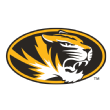
2018 record and rankings: 8-5 (No. 12 S&P+, No. 14 FPI)
2019 S&P+ projection: 8.1 wins (No. 16)
2019 FPI projection: 8.1 wins (No. 19)
Team culture is a lot like team depth -- you know it's going to be tested at some point, but you don't know when, and you don't know how.
Entering Year 4 of the Barry Odom era, Mizzou's culture was officially tested this offseason.
In February, Missouri got slapped around by the NCAA for what were deemed the actions of a rogue tutor years earlier. Among the punishments were postseason bans for the football, baseball and softball teams. The school has appealed -- basically like formally appealing your grounding to your parents -- and there has not yet been a resolution.
With a postseason ban comes an opportunity for some players. Seniors-to-be, who would now be banned from playing in the postseason for their final season of eligibility, are allowed to transfer without having to sit out a year.
None did. Despite the punishment, Mizzou has lost only one transfer this offseason (sophomore cornerback Terry Petry), fewest in the SEC. Plus, Clemson quarterback transfer Kelly Bryant, who committed to Mizzou before the sanctions came down, could have elected to go elsewhere. He did not.
Team culture grade: A.
That the roster mostly stuck together has turned a likely transitional season into a faux transition. Quarterback Drew Lock, receiver Emanuel Hall and defensive tackle Terry Beckner Jr. were in many ways the faces of last year's team, and all are gone. But Bryant gives the Tigers a returning starter of sorts at QB, returning tackle Jordan Elliott graded out better than Beckner per Pro Football Focus, and Hall was injured enough last year that backup Jalen Knox got a lot more reps than expected.
Missouri finished a healthy 12th in S&P+ last season. That might seem high for an 8-5 team, but all five losses came to S&P+ top-25 teams, two were dramatically unlikely from a statistical standpoint, and three were away from Columbia. Plus, the losses were offset somewhat by a blowout win over S&P+ No. 9 Florida in Gainesville.
Mizzou is projected 16th this coming fall. The Tigers draw Ole Miss and Arkansas from the SEC West and are projected favorites in 10 games.
Running back Larry Rountree III and an experienced offensive line should give the Tigers a nice ground game to lean on, especially with Bryant's own run prowess. The receiving corps will still feature tight end Albert Okwuegbunam, longtime slot man Johnathon Johnson and Knox, plus grad transfer Jonathan Nance, Arkansas' leading receiver in 2017.
On defense, the Tigers boast senior Cale Garrett at linebacker (first-team All-SEC, per PFF) and their most experienced secondary in quite some time. Their pass rush has lacked for a couple of seasons (they were 108th in sack rate last year), and that is not guaranteed to improve despite the addition of former LSU end Sci Martin and former Texas tackle Chris Daniels. But that's the one true blind spot on the two-deep.
Odom has proved himself quite a bit in terms of both talent identification and culture building. The last step in his own growth as a head coach, though, will come when he better figures out how to maneuver through close games.
Above, I noted that two of Mizzou's losses were statistically unlikely. Here's what I meant: One number I track is called postgame win expectancy -- it takes the key predictive stats from a given game, tosses them into the air and says, "With these stats, you could have expected to win this game X% of the time."
In the Tigers' 37-35 loss to South Carolina, Mizzou's postgame win expectancy was 97%, making it one of the least likely losses of the season. In their Liberty Bowl loss to Oklahoma State, it was 73%. Because of that, S&P+ saw Mizzou as more like a 9-4 team.
In the short term, this is a sign of randomness and bad luck. Over a longer period of time, however, certain coaches -- the Bill Snyders and Ken Niumatalolos of the world -- have shown they can consistently overachieve these postgame win probabilities. And if they're overachieving, someone has to be underachieving.
In three seasons, Odom has underachieved by more than a win per year, worse than anyone in FBS besides Miami (Ohio)'s Chuck Martin. A sign of unlucky randomness? Maybe. But Odom's in-game coaching is still a pretty clear work in progress. And if the Tigers merely achieve in this regard, they could be in for another nice year, postseason or no postseason.
South Carolina Gamecocks
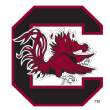
2018 record and rankings: 7-6 (No. 20 S&P+, No. 35 FPI)
2019 S&P+ projection: 5.9 wins (No. 18)
2019 FPI projection: 6.1 wins (No. 18)
According to both my S&P+ estimates and Sports Reference's SRS ratings, the best South Carolina team of all time took the field in 1987. Joe Morrison's squad boasted a 3,000-yard passer in Todd Ellis, an all-world receiver by the name of Sterling Sharpe and a defense with two All-Americans -- defensive back Brad Edwards and defensive tackle Roy Hart -- and two more soon-to-be draftees in the secondary. The Gamecocks averaged 28.4 points per game (18th in what we now call FBS), and a defense they called Black Death allowed just 11.8 (fourth).
The best South Carolina team ever went just 8-4. The Gamecocks' schedule featured trips to Georgia (which finished the year ranked 13th), Nebraska (sixth) and national champion Miami, plus a visit from Clemson (12th) and a Gator Bowl matchup with LSU (fifth).
Outside of these five games, they went 7-0 and outscored opponents by an average of 41-7. They beat Clemson by two touchdowns, too. They scared the hell out of Miami but fell by four points after a late turnover on downs, blew a series of scoring chances in a seven-point loss to Georgia, and led by eight in Lincoln before a late Nebraska charge. This was an obviously good team, and with an easier schedule, they would have made a run at 10 wins and a top-10 finish.
The 2019 South Carolina team might wish it had the 1987 schedule.
Will Muschamp's fourth SC squad will face each of the projected top three teams in S&P+ (Alabama Sept. 14, at Georgia Oct. 12, and Clemson Nov. 30), plus four others projected 21st or higher. A majority of SC's schedule will come against top-25 caliber teams, and that's before we get to home games against Appalachian State and Kentucky and a neutral-field game against a mystery of a North Carolina team.
South Carolina is projected 18th, and there's at least a chance that S&P+ is underestimating the Gamecocks due to the "basically every single defender got hurt last year" factor. They have massive experience at quarterback (barring injury, Jake Bentley will finish his career as SC's all-time leading passer), in the skill corps (Rico Dowdle and Mon Denson combined for 1,086 rushing yards last year, and Bryan Edwards and Shi Smith had 100 catches for 1,519) and in the defensive front seven (11 of 13 players with at least three tackles for loss are back).
In areas in which the proven talent is minimal (offensive line, secondary), tons of players saw the field and got some level of experience. Quantity makes quality a bit more likely.
This could be a rock-solid team. It'll have to be to go even 6-6 or 7-5.
So here's the major question facing Muschamp & Co. this fall: How in the world do you define success? Muschamp, of course, will talk about wanting to compete and win every game and whatnot, and that's fine -- coaches say unrealistic things all the time. But it's hard for anyone to talk themselves into 7-5 being a truly successful year, even if it would be. And it's even harder when your in-state rival is winning national titles.
Muschamp's done a solid job in Columbia. He inherited a 3-9 mess from Steve Spurrier, and though the team improved to 6-7 in his first year, it was mainly because of narrow wins over bad teams. But the Gamecocks jumped to 41st in S&P+ in 2017 thanks to a resurgent defense, then improved to 20th last fall because of a drastically improved offense.
Muschamp offenses have been notoriously stultified through the years, but to his credit, he asked offensive coordinator Bryan McClendon to spread things out and increase the tempo last year, and it worked. SC ranked 11th in adjusted pace* and 34th in the percentage of solo tackles created** and improved overall.
The arrows haven't all been pointed in the same direction just yet, but the biggest driver of SC's record has been the schedule. It has gotten harder each year Muschamp has been in Columbia, and that will almost certainly continue. But on the bright side, it might not be possible to get any more difficult than this year's slate. All downhill from here!
* Adjusted pace looks at your average seconds per play and compares it to what is expected based on your run-pass ratio. South Carolina operated 2.8 seconds per play faster than expectations.
** Looking at your percentage of solo tackles created tells us a lot about how much of the time your ball carriers are spending in open spaces. Some context: Arizona and Missouri created the most solo tackles last year, while LSU and Army created the fewest. That should tell you something.
Tennessee Volunteers

2018 record and rankings: 5-7 (No. 48 in S&P+, No. 65 in FPI)
2019 S&P+ projection: 6.5 wins (No. 21)
2019 FPI projection: 7.6 wins (No. 15)
Over the past two seasons, Tennessee is 2-14 in SEC play, worst in the SEC East. Kentucky and South Carolina are both 9-7 in that span, and Missouri is 8-8. Even Vanderbilt, at 4-12, has doubled the Volunteers' wins.
If you're a Wildcats, Gamecocks, Tigers or Commodores fan, then, you probably reacted with a grumble and a healthy roll of the eyes when you saw this year's FPI or S&P+ projections. Despite such a drastic recent downturn, Tennessee is projected 15th in the former and 21st in the latter. Infuriating, right? Another sign of how recruiting rankings are overrated, or how media outlets prop up blue bloods, yeah?
These projections might end up proven drastically wrong. It wouldn't be the first time. But the logic behind the Vols' projected surge isn't exactly ... illogical.
First, recruiting rankings are indeed predictive. Starting with a deeper base is better than starting with less, even if teams sometimes don't end up developing or deploying it properly. Jeremy Pruitt's first full-year recruiting class at UT ranked 11th overall. Granted, UT almost always grades out pretty well in this regard, but despite annual outliers, recruiting rankings tend to make for more accurate projections.
Pruitt and the Vols have something much bigger and more important going for them in 2019, however: continuity.
They return their leading passer (Jarrett Guarantano), their top three running backs (all of whom were freshmen or sophomores last year), their top five wideouts, their starting tight end, seven of the eight offensive linemen who started a game last year, four of their top six linebackers and six of their top eight defensive backs. There is quite a bit of turnover on the defensive line, but on the bright side, the defensive line wasn't very good. There's not a ton of room for a drop-off.
Really, the primary turnover has come on staff. Pruitt originally hired Tyson Helton as his offensive coordinator and Kevin Sherrer and Chris Rumph as his defensive co-coordinators. But Helton is now WKU's head coach, and Pruitt brought in Jim Chaney, most recently of Georgia, to replace him. Pruitt also hired former USC coordinator Tee Martin as assistant head coach and passing game coordinator. On defense, Pruitt bumped Sherrer to special teams coordinator and hired former Bama DBs coach Derrick Ansley as DC.
There's one more factor in UT's favor: the second-year effect. If a coach is going to oversee a major surge in his program, it's probably happening in either his second or third season. Pruitt's division rivals, and a certain former boss, provide anecdotal proof of that.
Kirby Smart's second UGA team went from 42nd in S&P+ to fourth. South Carolina improved from 85th to 41st in Will Muschamp's second year. Missouri went from 70th to 28th in Barry Odom's second season. Kentucky improved from 74th to 51st in Year 2 under Mark Stoops. Former Pruitt boss Nick Saban oversaw a leap from 31st to 10th at Alabama in 2008.
Year 2 is when your culture has a chance to truly take effect. Your players know what is expected of them, there are more of your own recruits in the pipeline, and if you made any shaky hires out of the gates, you've had a chance to rectify them. If you have success in you, this is when we probably begin to see it.
We of course can't guarantee Pruitt has success in him. His pre-UT résumé was obviously excellent -- eight years with Saban (two as defensive coordinator, both with defenses that ranked No. 1 in Def. S&P+), one national title season as Jimbo Fisher's DC at Florida State, etc. But he has proved to be irascible at times, and hey, not nearly every former Saban assistant works out as a head coach.
The peripherals here are encouraging on paper, anyway. Ansley's first UT defense will boast a strong pass rush built around senior linebacker Darrell Taylor (11 tackles for loss, eight sacks), and a secondary that was harried and constantly shuffled due to injury and youth has had a chance to settle a bit. The Vols will indeed need newcomers to spruce things up a bit up front, but the base is more stable than it was last year.
On offense, the receiver trio of Marquez Callaway, Jauan Jennings, and Josh Palmer (combined: 90 catches, 1,514 yards, and a 52% success rate) has massive potential when healthy. Progress totally depends on the Chaney-Guarantano marriage, and Chaney's got a good track record in that regard.
Kentucky Wildcats
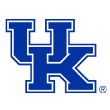
2018 record and rankings: 10-3 (No. 25 in S&P+, No. 26 in FPI)
2019 S&P+ projection: 6.1 wins (No. 37)
2019 FPI projection: 6.4 wins (No. 40)
From the moment Kentucky hired former Florida State defensive coordinator Mark Stoops as its head coach in December 2012, it was pretty obvious the emphasis would be on the long term. And if that wasn't clear immediately, it became clear when the school gave Stoops a contract extension after one season and just two wins.
This was a period of reinvestment. UK made $120 million worth of renovations to an outdated Commonwealth Stadium (now Kroger Field), and Stoops went to work in the recruiting department. He signed ESPN's No. 20 class in the country in 2014, then settled into the Nos. 30-36 range thereafter.
UK's depth slowly improved over time, but the results really didn't. Despite nice second-year improvement and a fourth-year bowl breakthrough (the Wildcats went 7-6 in both 2016 and 2017), they averaged only a No. 67 S&P+ ranking and six wins a year from 2014-17. The offense was slowly improving, but the defense wasn't. It was a ghastly 80th in Def. S&P+ in 2017.
To that point, Stoops had struggled to develop any semblance of consistency. His Wildcats had enjoyed three spurts of five wins in six games, plus a four-in-five run. They had also suffered a six-game losing streak and runs of eight losses in nine games and five in seven. Up, down, up, down, up, down. It was easy to assume that was simply what Kentucky was going to be.
Then 2018 happened.
Kentucky began the year 5-0, ending a 31-year losing streak against Florida, scoring the last 28 points in a three-score win over Mississippi State and going on a 21-0 run to beat South Carolina. After an overtime loss at Texas A&M, the Wildcats outlasted Vanderbilt in a defensive slog and outscored Missouri 12-0 in the fourth quarter to win 15-14.
The offense vanished for a while -- the Wildcats didn't score more than 17 points in a game from Oct. 6 to Nov. 10 -- but the wins mostly continued, thanks to Stoops' first good defense, one of the most senior-heavy in college football. Outside linebacker Josh Allen (21.5 TFLs, 17 sacks, 24 run stuffs, four pass breakups, five forced fumbles) went from a good piece to maybe the best defensive player in college football, and a well-seasoned secondary capitalized on nearly every mistake opposing QBs made. UK leaped to 15th in Def. S&P+ and finished 10-3.
This year represents maybe the biggest test for a program builder: maintenance. It's hard enough for coaches to engineer one breakthrough -- doing it and then keeping your program at its new height can be too much sometimes.
Stoops has to replace nearly every player you could name from last year's squad: Allen, running back Benny Snell Jr., All-American offensive guard Bunchy Stallings, safeties Mike Edwards and Darius West, corners Derrick Baity Jr. and Lonnie Johnson Jr., etc. That's enough for the Wildcats to drop to 11th in the SEC, and sixth in the East, in both FPI and S&P+ projections.
Still, there's upside. Quarterback Terry Wilson, a low-risk passer and strong runner, is back for his junior season, and he'll get competition from Troy transfer Sawyer Smith. Plus, although five of last year's top six targets are gone -- continuity in the receiving corps is a strong predictor of improvement and regression, and UK has very little of it -- slot receiver Lynn Bowden Jr. is one of the best possession men in the country. (He also turned the Missouri game around with a punt return score.)
On defense, Allen and weakside linebacker Jordan Jones are gone, but everybody else in the front seven returns, including middle linebacker Kash Daniel and man-mountain Calvin Taylor Jr. (6-foot-9, 310 pounds). Stoops' steady recruiting means he has a level of depth he can call on, as well; that hasn't always been the case.
He's got size, too. The two-deep on the offensive line will likely feature Logan Stenberg (6-foot-6, 322), Landon Young (6-7, 324), Darian Kinnard (6-5, 324), Mason Wolfe (6-6, 323), Austin Dotson (6-6, 331) and redshirt freshman Nick Lewis (6-9, 367). The defensive line features not only Taylor, but also Phil Hoskins (6-5, 306) and Quinton Bohanna (6-4, 361). That's big even by SEC standards. You're going to feel it when you play Kentucky.
Still, against a schedule that features seven projected S&P+ top-25 opponents, the primary goal is keeping a three-year bowl streak alive. An eight-game home slate and pillow-soft nonconference schedule (Toledo, EMU, UT Martin, Louisville) should allow the Wildcats to achieve that.
Vanderbilt Commodores

2018 record and rankings: 6-7 (No. 39 in S&P+, No. 53 in FPI)
2019 S&P+ projection: 4.9 wins (No. 53)
2019 FPI projection: 5.3 wins (No. 50)
One of my favorite moments of the 2018 college football season came on Oct. 13 in Nashville when, after a targeting call on a Florida player, Vanderbilt head coach Derek Mason marched across the field and, it appeared at the time, challenged the entire Florida bench to a fight.
After a targeting call, things got chippy in the Florida/Vanderbilt game 👀 pic.twitter.com/UJBna9MKSh
— ESPN (@espn) October 13, 2018
Mason and UF head coach Dan Mullen would hug it out after the game, but the symbolism in the moment was hard to avoid: Mason, a former college cornerback and one of the smaller (in stature) football coaches you'll see, standing up for his own dramatically undersized -- physically and historically -- football program. The moment was certainly not lost on his players, some of whom charged across the field to have his back.
Of course, Vanderbilt gave up a 34-6 run to end that game and lost by 10. The Commodores played seven power-conference bowl teams in 2018 and went 0-7 against them. Toughness and good intentions don't make a difficult job much less difficult.
Through five years, Mason's win percentage at Vandy is 0.387. That's not very good on the surface, but it's third-best of any Vandy coach of the past 40 years, topped only by James Franklin (0.615) and Gerry DiNardo (0.432). After going 7-17 in his first two years, Mason has eked out bowl bids in two of the last three. The Commodores have beaten in-state rival Tennessee three times in a row and have, per S&P+, improved for four consecutive years.
Still, with maybe the school's best offense since the 1970s, Vanderbilt went 6-7. The Dores outscored opponents by 24 points but went just 2-4 in one-possession finishes. And now they have to replace longtime starting quarterback Kyle Shurmur and seven defensive starters.
Is this a starting-over point, then? Maybe not. For one thing, Mason still has Ke'Shawn Vaughn. The Illinois transfer completely changed Vandy's offense when he stepped in as the feature back down the stretch.
Through eight games, Vaughn had 72 carries (nine per game) for 495 yards and five touchdowns, and the Commodores were averaging 23.1 points per game. Over the last five games, Vaughn carried 85 times (17 per game) for 749 yards and seven scores, and Vandy averaged 37 points per game.
Vaughn rushed for 182 yards in 15 carries in a near-upset at Missouri, and he needed only 13 carries to gain 243 yards against Baylor in a thrilling Texas Bowl. That "school's best offense since the 1970s" thing didn't take shape until he started seeing the field more. He is a stick of dynamite, easily the most dangerous offensive player Vanderbilt has had since Jordan Matthews or Earl Bennett.
With Vaughn, big-play tight end Jared Pinkney, possession man Kalija Lipscomb, and young wideouts like C.J. Bolar, Cam Johnson and Amir Abdur-Rahman, Vandy has a skill corps that could far exceed its recruiting rankings. We'll see if the Commodores have a quarterback.
Mason leaned into the underdog theme with some small-school transfers. Former Ball State quarterback Riley Neal might start for the Dores this fall, and Mason added players from Harvard (receiver Justice Shelton-Mosley), Marist (tackle Eddie Zinn-Turner), and South Alabama (guard Rowan Godwin), plus another Illinois transfer (corner Cam Watkins) for good measure. If any of them show a fraction of Vaughn's upside, that's a net win.
If only one of those transfers were to work out, though, make it the 6-foot-1, 300-pound Zinn-Turner. The Commodores' defensive front gave up at least 4 yards on 55% of non-sack carries last year (124th in FBS) and stuffed opponents at or behind the line just 16% of the time (107th). The front seven was undersized, and it showed. Their red zone defense was solid, but opponents created red zone opportunities with ease.
Morale could be key this fall. In the Commodores' first three games of the season, they host Georgia and LSU, sandwiching a trip to Purdue in between. Per S&P+, they are a projected underdog in nine games. Granted, Vaughn will get plenty of opportunities to do big things against big-time opponents, but reaching a third bowl in four years will be tricky, especially if the run front is still outmanned.
